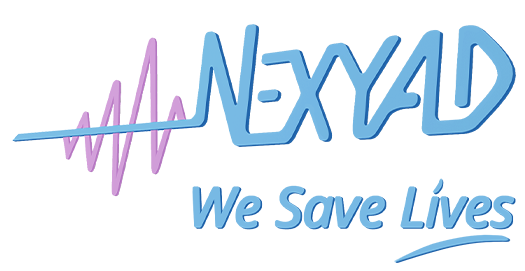It’s time for BYOD & SDV
NEXYAD Automotive & Transportation Newsletter #43, April 1st, 2024
It’s time for BYOD & SDV
Headlines :
– Nexyad signed a co-Innovation Partnership with Stellantis
– Demonstration of Nexyad Dreamotor1 to Partners
– New videos of Use-Cases in Dreamotor1 using SafetyNex
– Colloque sur la sécurité Routière / Road Safety Conference
|
Hello, It is time for transformation for NEXYAD, the transition from a research and development activity to an activity of exploitation of results in two areas: . The SDV (Software Defined Vehicle), a veritable computer on wheels, which transforms the OEM business into a software publisher that integrates parts developed elsewhere. |
The preventive ACC, or the autonomous driving, for example, can be seen as a software integration of our SafetyNex tool, which offers a caution metric.
The complexity of vehicles, from a software point of view, is growing faster than productivity and we have a blue ocean in terms of market.
Our AI systems considerably reduce complexity and that is why we are structured to help manufacturers implement our technologies.
We Save Lives
Gerard, CEO of Nexyad
2024 has started strongly for Nexyad with this co-innovation partnership that we signed with Stellantis.

They have tested NEXYAD democar Dreamotor 1 from November 2023 to March 2024, around Renault Technocentre in Guyancourt or Nexyad office in St Germain en Laye. Test for AVL in November 27th 2023, APTIV; in November 28th 2023, the same day February 13th 2024 GLOBAL LOGIC & NETWALK and RENAULT March 7th 2024.
Dreamotor 1 sponsors : 

partners : ![]()
![]()
![]()
![]()
![]()




![]()

SafetyNex provides in real time prudent recommended speed, lack of prudence alerts and instant prudent speed for Driver Assistance. See an example of use-case below :
This video was made in our democar Dreamotor1. On the screen we can see the HMI (for engineers) with the road captured by a dashcam. On the top left of the screen there are the current speed of the vehicle, the speed limit sign, and just below the next speed limit read on the map. The colored square on the left says the driving is prudent, it can be yellow when it’s time to be vigilant and even red if driving is at risk. When a singularity is detected, the road sign is pasted with the distance where to apply recommended speed in order stay prudent. Below the colored square, risk target indicates the level of max accepted risk to stay green. In this example, we vary the risk target to see adaptation of the system to different drivings : from very prudent to prudent. On the top center, we show action of the blinkers indicating new direction at the Electronic Horizon.
In this video we present a use-case of anticipation should do a good driver when some object (a truck here) masks surroundings of the pedestrian crossing. A case of bad visibility. We assume that the system detects and recognize the truck and have the information about the pedestrian crossing (on the map read by eHorizon). It is not possible to know (see) if the truck hides a pedestrian ready to cross the road or not. Staying at the same speed is playing dices with luck or bad luck. It is why our system, based on knowledge of road safety, recommends to reduce speed at 45km/h before this singularity.
Paris, March 20th 2024.
« 3500 morts par an sur les routes depuis 10 ans : et maintenant on fait quoi ? »
La ligue de défense des conducteurs a organisé un colloque pour faire le point sur les mesures gouvernementales depuis plusieurs décennies en matière de sécurité routière.
Il ressort des interventions des trois tables rondes, que l’Etat Français a beaucoup misé sur la répression, que l’état des routes en France se dégrade depuis la décentralisation et la perte en compétence des équipes de l’équipement éclatées par département. Les nouvelles mobilités, bicyclettes et trotinettes partageant souvent une même infrastruture ont augmenté l’accidentologie des vulnérables peu protégés. Et les moyens financiers pour une bonne éducation des jeunes conducteurs semblent manquer.
Les points positifs étant l’amélioration de la sécurité active et passive des véhicules depuis plus d’une vingtaine d’années et la prise en charge plus rapide et plus efficace des blessés de la route par les services de santé et de traumatologie.
The French Drivers’ Defense League organized a conference to take stock of government measures over several decades in terms of road safety. Despite multiplication of speed cameras and lower speed limits, the number of fatalities is stable for 10 year around 3500 each year in France.
It emerges from the interventions of the three round tables that the French State has relied heavily on repression, that the state of the roads in France has deteriorated since decentralization and the loss of skills of the equipment teams split up by department. New forms of mobility, bicycles and scooters often sharing the same infrastructure, have increased the number of accidents among poorly protected vulnerable people. And the financial means for a good education of young drivers seem to be lacking.
The positive points being the improvement in active and passive safety of vehicles over more than twenty years and the faster and more effective treatment of road injuries by health and trauma services.
Tous les détails sur le programme de la demi-journée et les intervenants sont ici (all details here) : https://www.liguedesconducteurs.org/actu-1/colloque-3-500-morts-par-an-sur-les-routes-depuis-dix-ans
































